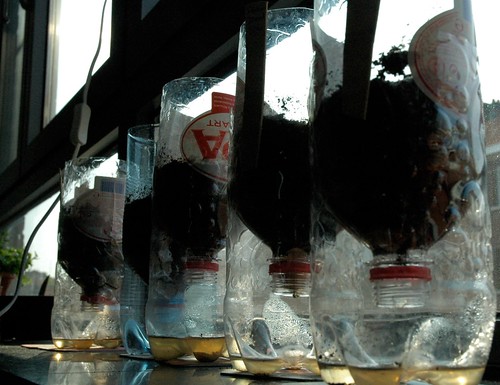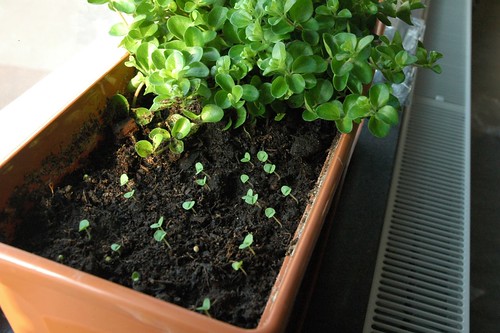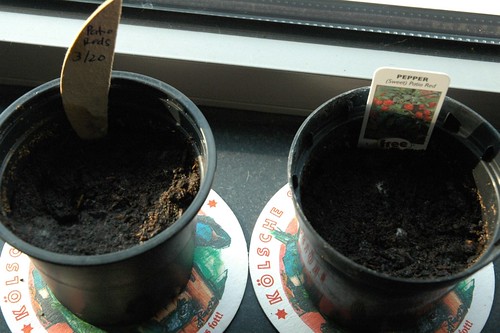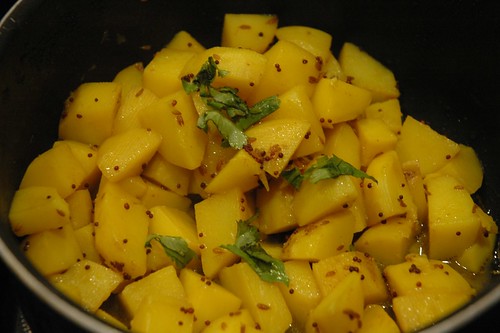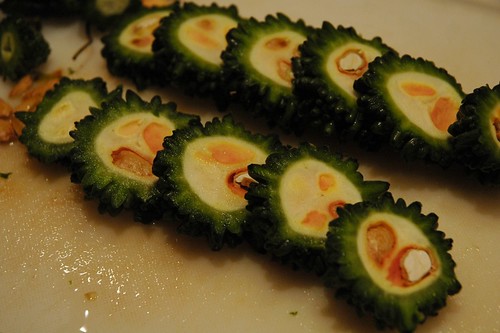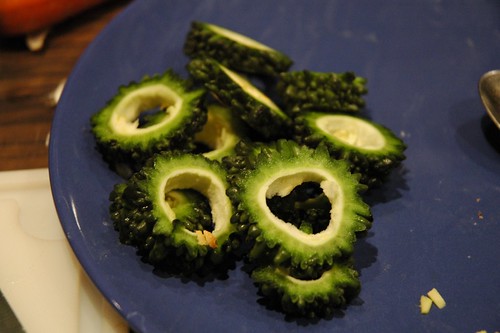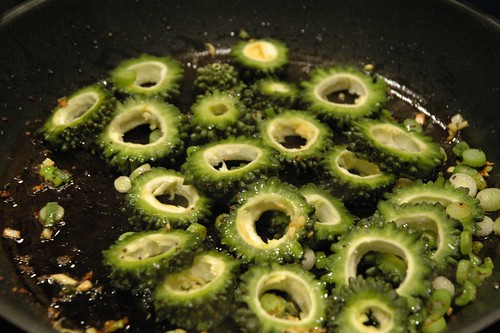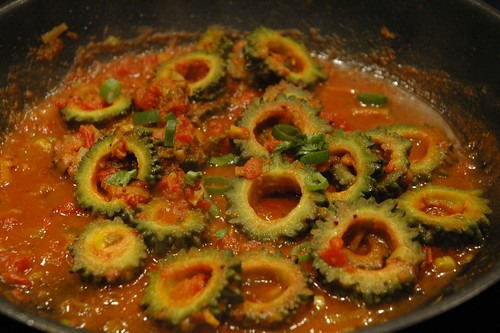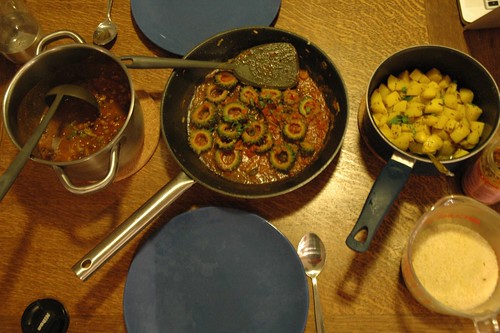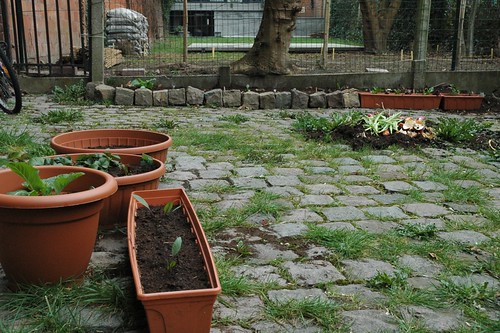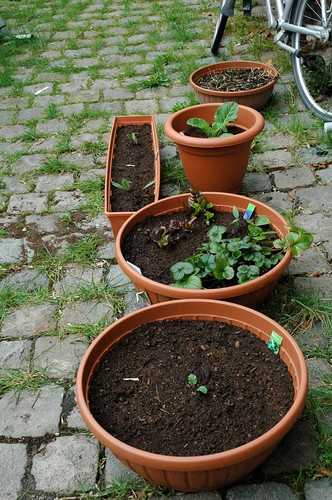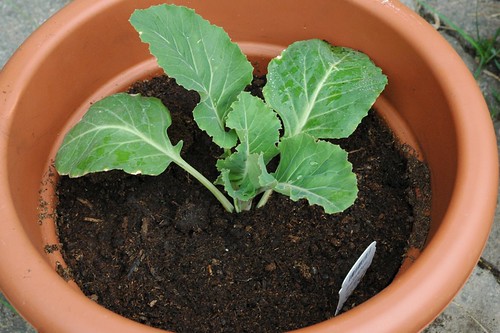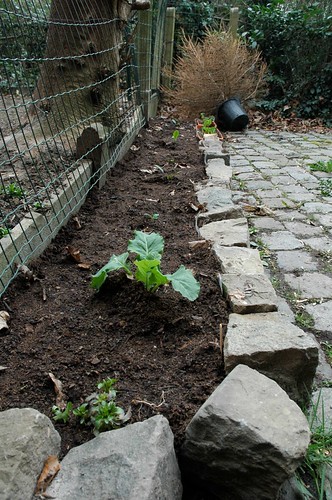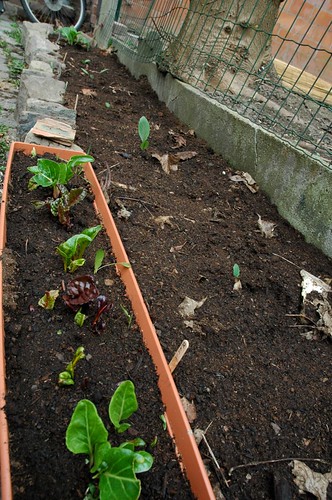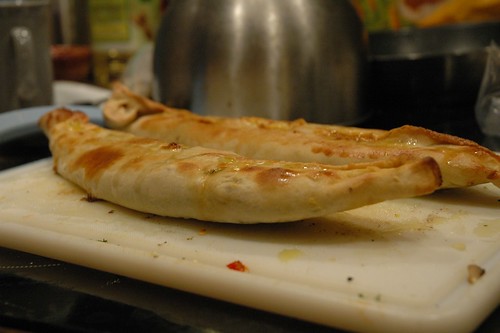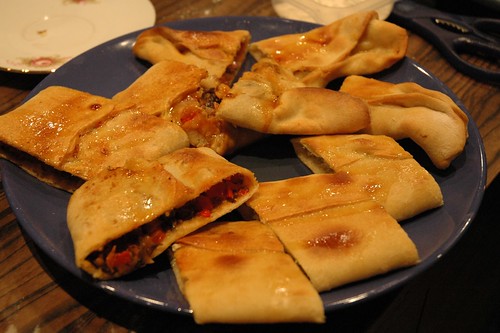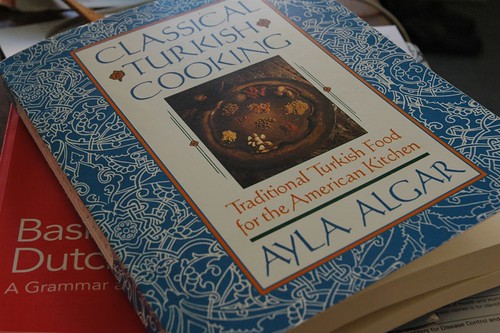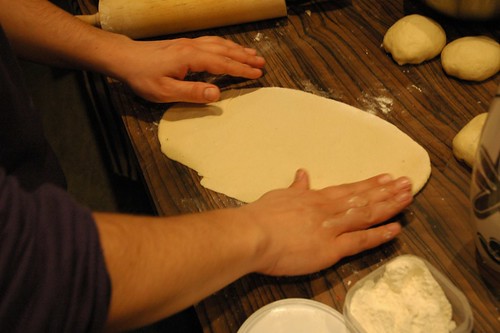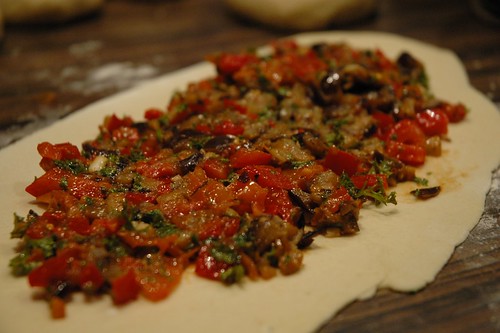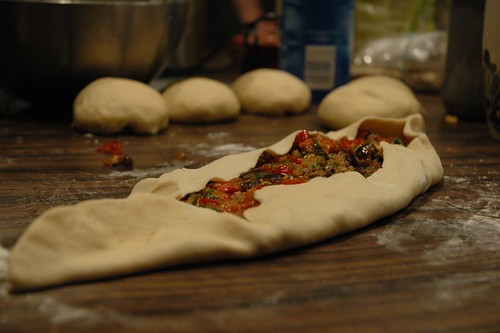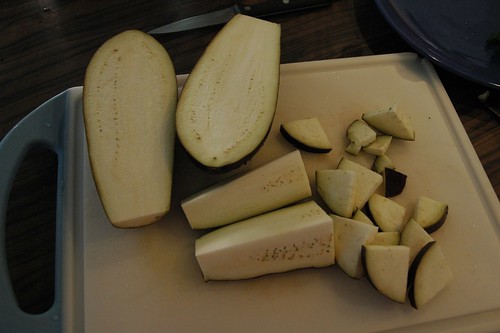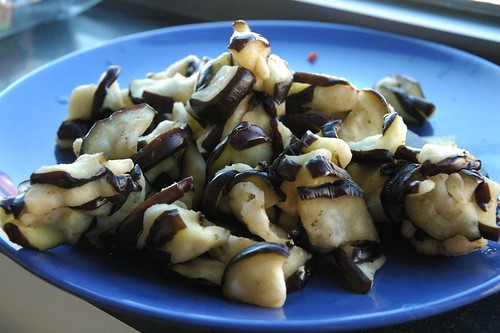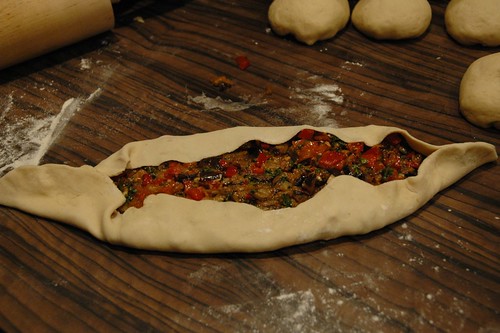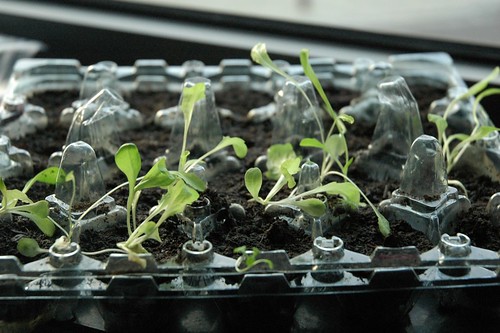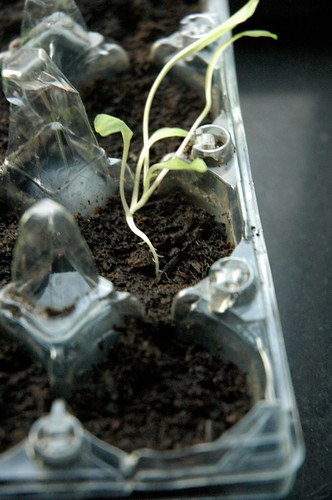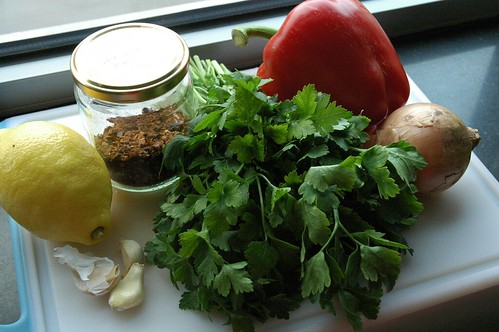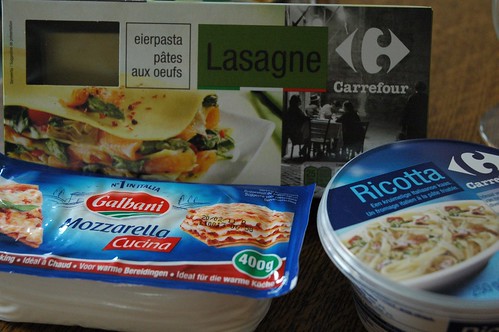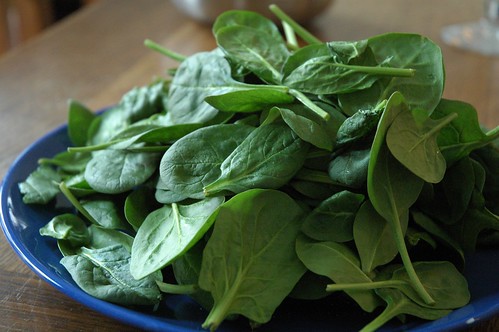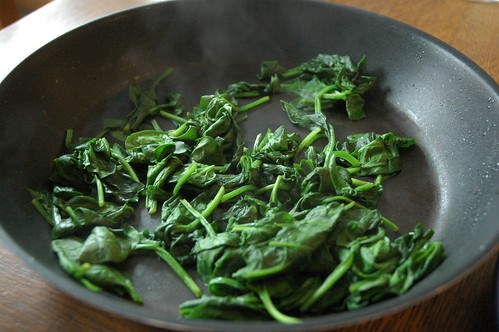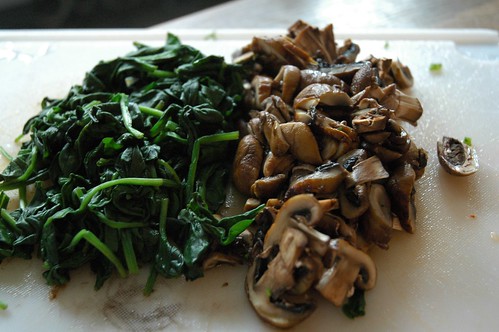I'll admit it. I was jealous. You would be to if you looked at these fantastic delicious dumplings and pot stickers. I was jealous, but inspired. A few weekends back, I made batches of these and put them in the freezer. Below are 3 recipes for preparing vegetarian potsticker dumplings with ready-prepared wonton wrappers (square or circular). Although I use the word dumpling often, these are probably closer to potstickers, since they are first lightly pan fried in a skillet, and then steamed, hence potsticker dumplings.
Prepare the ingredients, and then lay out the fillings in bowls. Set out the wonton wrappers, a small bowl of water, and a freezer-safe tray or dish. Fill each wrapper with 1 tsp of stuffing, wet the borders on one side of the wrapper, and fold together. You can make nice pleats if you want; avoid over-stuffing as it'll make it difficult to stay closed. Freeze dumplings before transferring them to freezer safe storage bags. Don't forget to label them if you make multiple recipes.
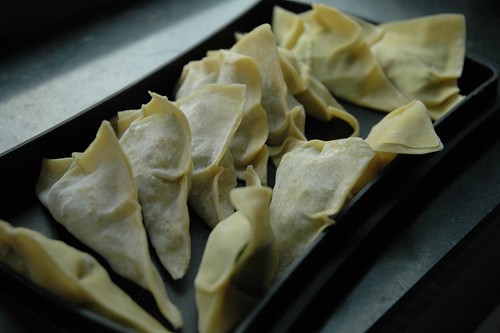
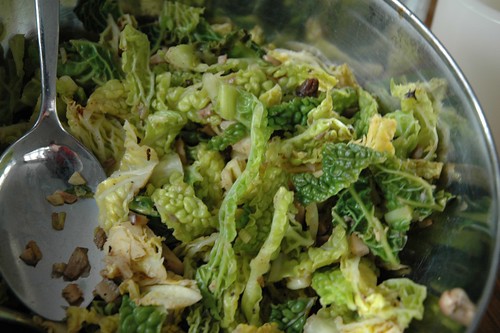

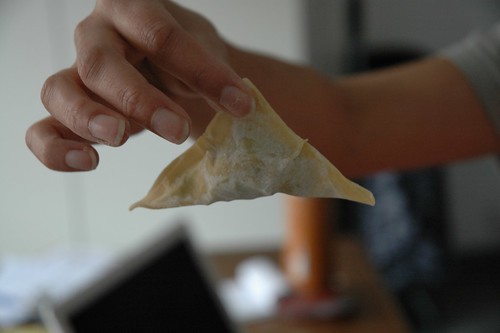
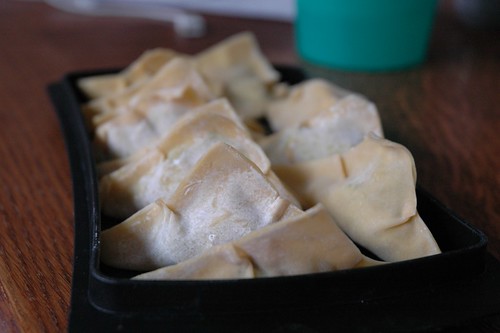 When ready to cook (frozen or fresh) heat up 1 tbsp of peanut oil in a pan over medium-high heat. Add in dumplings in a single layer, and cook 1-2 minutes (fresh), and 2-4 minutes (frozen) or until bottoms are golden. Add in ¼ cup of water, and steam the dumplings until the water evaporates, about 2 minutes. Carefully, remove the dumplings (or pot stickers) and serve immediately with some dipping sauce. I like to mix together 3 tbsp soy sauce, 1 tbsp rice wine vinegar, 1 tsp sesame oil, and 1 tbsp green onions. Four to five dumplings make a nice appetizer.
When ready to cook (frozen or fresh) heat up 1 tbsp of peanut oil in a pan over medium-high heat. Add in dumplings in a single layer, and cook 1-2 minutes (fresh), and 2-4 minutes (frozen) or until bottoms are golden. Add in ¼ cup of water, and steam the dumplings until the water evaporates, about 2 minutes. Carefully, remove the dumplings (or pot stickers) and serve immediately with some dipping sauce. I like to mix together 3 tbsp soy sauce, 1 tbsp rice wine vinegar, 1 tsp sesame oil, and 1 tbsp green onions. Four to five dumplings make a nice appetizer.
Recipe 1: Chinese 5-spice potsticker dumplings
1 block of tempeh, steamed and crumbled
1 tbsp peanut oil
1 clove garlic, chopped fine
1 medium carrot, grated
1 cup napa cabbage, shredded
1, 1/2-inch piece of ginger, chopped fine
2 green onions, chopped fine
2 tbsp cilantro, chopped fine
½ tsp Chinese 5-spice powder
30 wonton wrappers
Bring a small pot of water to boil. Once boiling, add in tempeh and turn heat down to medium. Steam/boil for 10 minutes. Set aside to cool. Crumble into a fine texture once cool enough to handle.
In a large bowl combine carrot, cabbage, ginger, green onions, and cilantro. Stir to combine.
Heat the peanut oil over high heat in a wide skillet, add in garlic and tempeh and stir-fry 5 minutes. Once golden, add in carrot through cilantro mixture. Continue to cook 2 minutes and stir in Chinese 5-spice powder. Remove to a bowl to cool.
Recipe 2: Chinese dumplings with cabbage, mushrooms and leeks
Recipe adapted from Deborah Madison's Vegetarian Cooking for Everyone. The recipe calls for 24 wonton wrappers, but when I made this it made closer to 50.
1 pound napa cabbage or 4 generous cups, shredded, or sliced very fine
salt
½ cup whole shiitake or oyster mushrooms, finely chopped (*see note below)
2 tbsp leeks or green onions, chopped
1 clove garlic, chopped fine
1, ½-piece ginger, chopped fine
1 tsp rice-wine vinegar
salt and pepper to taste
50 wonton wrappers
*Note: you can also use ¼ cup dried black Chinese mushrooms, and ¼ cup dried tree ear mushrooms, rehydrated, and chopped. If using these, omit shiitake, and use fresh mushrooms instead.
Set the cabbage in a colander over the sink. Salt the cabbage generously and let sit for about an hour. Squeeze excess water from cabbage. Rinse the cabbage lightly to get rid of the salt. Taste to make sure it isn't too salty.
Combine cabbage, mushrooms, leeks or green onions, garlic, ginger, and rice-wine vinegar. Season with salt and pepper.
When ready to cook, add in ½ cup of water instead of ¼ cup of water and steam them for 7 minutes. Since the stuffing is raw, it'll cook the veggies down a bit.
Recipe 3: Spicy edamame potsticker dumplings
Recipe adapted from Cooking Light magazine. I have made these several times, and they are the simplest dumplings to prepare.
1 cup edamame, shelled (if frozen, cooked according to package directions)
1 tsp fresh lemon juice
¼ tsp red chili flakes
½ tsp cumin
1 tsp sesame oil
salt and pepper to taste
20 wonton wrappers
Combine edamame, lemon juice, red chili flakes, and cumin in a food processor; process until smooth, do not over process. Stir in sesame oil, and taste. Adjust with salt and pepper. To make without a food processor, smash the beans when they are hot with potato masher, and then add in rest of ingredients and continue to smash.
Dipping sauce: Soy-rice-sesame dipping sauce
3 tbsp low-sodium soy sauce
1 tbsp water
1 tbsp rice wine vinegar
1 tsp toasted sesame oil or dark sesame oil
Optional: 1 tbsp green onions or 1 tsp toasted sesame seeds
Combine all ingredients together and stir in green onions or sesame seeds if using. Serve immediately. You can alter the proportions of any ingredient, or omit them. To make a spicier dipping sauce, add in ¼ tsp red chili flakes and 1 clove minced fresh garlic.



